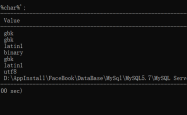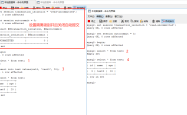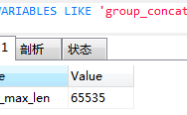MySQL 查询树结构方式
目录
- mysql 查询树结构
- 1. 关于树结构
- 2. mysql自定义函数的方式
- 2.1 创建测试数据
- 2.2 获取 某节点下所有子节点
- 2.3 获取 某节点的所有父节点
- 3. oracle数据库的方式
- 4. 程序代码递归的方式构建树
- 5. 通过hashmap,只需要遍历一次
- mysql 查询带树状结构的信息
- 在oracle中可以直接用下面的语法可以进行直接查询
- 但是在mysql中是没有这个语法的
- 在oracle中可以直接用下面的语法可以进行直接查询
mysql 查询树结构
1. 关于树结构

此类结构的数据,通常需要表结构中含有id 、parentid等自关联字段,有时为了提高查询效率还可增加更多冗余字段,如index,index的值为所有父级目录的id字符串集合。
关于树结构数据的组装,常见的写法是在程序中通过递归的方式去构建出一颗完整的树,单纯通过sql的方式其实并不常用,下面分别给出两种方式的例子。
2. mysql自定义函数的方式
什么是mysql自定义函数:聚合函数,日期函数之类的都是mysql的函数,此处我们定义的函数可同他们一样使用,不过只能在定义的数据库中使用,自定义函数和存储过程类似,不同的是,函数只会返回一个值,不允许返回一个结果集。
2.1 创建测试数据
?| 1 2 3 4 5 6 7 8 9 10 11 12 13 14 | create table `tree` ( `id` bigint (11) not null , `pid` bigint (11) null default null , ` name ` varchar (255) character set utf8 collate utf8_general_ci null default null , primary key (`id`) using btree ) engine = innodb character set = utf8 collate = utf8_general_ci row_format = dynamic ; insert into `tree` values (1, 0, '中国' ); insert into `tree` values (2, 1, '四川省' ); insert into `tree` values (3, 2, '成都市' ); insert into `tree` values (4, 3, '武侯区' ); insert into `tree` values (5, 4, '红牌楼' ); insert into `tree` values (6, 1, '广东省' ); insert into `tree` values (7, 1, '浙江省' ); insert into `tree` values (8, 6, '广州市' ); |
2.2 获取 某节点下所有子节点
?| 1 2 3 4 5 6 7 8 9 10 11 12 13 | create function `get_child_node`(rootid varchar (100)) returns varchar (2000) begin declare str varchar (2000); declare cid varchar (100); set str = '$' ; set cid = rootid; while cid is not null do set str = concat(str, ',' , cid); select group_concat(id) into cid from tree where find_in_set(pid, cid); end while; return str; end |
调用自定义函数
?| 1 | select * from tree where find_in_set(id, get_child_node(2)); |

2.3 获取 某节点的所有父节点
?| 1 2 3 4 5 6 7 8 9 10 11 12 13 14 15 16 17 | create function `get_parent_node`(rootid varchar (100)) returns varchar (1000) begin declare fid varchar (100) default '' ; declare str varchar (1000) default rootid; while rootid is not null do set fid =( select pid from tree where id = rootid); if fid is not null then set str = concat(str, ',' , fid); set rootid = fid; else set rootid = fid; end if; end while; return str; end |
调用自定义函数
?| 1 | select * from tree where find_in_set(id, get_parent_node(5)); |

3. oracle数据库的方式
只需要使用start with connect by prior语句即可完成递归的树查询,详情请自己查阅相关资料。
4. 程序代码递归的方式构建树
这里我就不给出完整代码了,递归的方式很简单,就是先查出所有树节点,然后通过一个treenode类中的add方法递归把所有子节点给加进来。核心代码如下:
?| 1 2 3 4 5 6 7 8 9 10 11 12 13 14 15 16 17 18 19 | public class treenodedto { private string id; private string parentid; private string name ; private list<treenodedto> children = new arraylist<>(); public void add (treenodedto node) { if ( "0" .equals(node.parentid)) { this.children. add (node); } else if (node.parentid.equals(this.id)) { this.children. add (node); } else { //递归调用 add ()添加子节点 for (treenodedto tmp_node : children) { tmp_node. add (node); } } } } |
5. 通过hashmap,只需要遍历一次
就可以完成树的生成:五星推荐
?| 1 2 3 4 5 6 7 8 9 10 11 12 13 14 | list<treenodedto> list = dbmapper.getnodelist(); arraylist<treenodedto> rootnodes = new arraylist<>(); map< integer , treenodedto> map = new hashmap<>(); for (treenodedto node :list) { map.put(node.getid(), node); integer parentid = node.getparentid(); // 判断是否有父节点 (没有父节点本身就是个父菜单) if (parentid.equals( '0' )){ rootnodes. add (node); // 找出不是父级菜单的且集合中包括其父菜单id } else if (map.containskey(parentid)){ map.get(parentid).getchildren(). add (node); } } |
mysql 查询带树状结构的信息
在oracle中有函数应用直接能够查询出树状的树状结构信息,例如有下面树状结构的组织成员架构,那么如果我们想查其中一个节点下的所有节点信息
在oracle中可以直接用下面的语法可以进行直接查询
?| 1 | start with connect by prior |
但是在mysql中是没有这个语法的
而如果你也是想要查询这样的数据结构信息该怎么做呢?我们可以自定义函数。我们将上面的信息初始化信息进数据库中。首先先创建一张表用于存储这些信息,id为存储自身的id信息,parent_id存储父id信息
?| 1 2 3 4 5 | create table `company_inf` ( `id` varchar (32) collate utf8mb4_unicode_ci default null , ` name ` varchar (255) collate utf8mb4_unicode_ci default null , `parent_id` varchar (32) collate utf8mb4_unicode_ci default null ) |
然后将图中的信息初始化表中
?| 1 2 3 4 5 6 7 8 9 10 11 12 13 14 15 16 | insert into company_inf values ( '1' , '总经理王大麻子' , '1' ); insert into company_inf values ( '2' , '研发部经理刘大瘸子' , '1' ); insert into company_inf values ( '3' , '销售部经理马二愣子' , '1' ); insert into company_inf values ( '4' , '财务部经理赵三驼子' , '1' ); insert into company_inf values ( '5' , '秘书员工j' , '1' ); insert into company_inf values ( '6' , '研发一组组长吴大棒槌' , '2' ); insert into company_inf values ( '7' , '研发二组组长郑老六' , '2' ); insert into company_inf values ( '8' , '销售人员g' , '3' ); insert into company_inf values ( '9' , '销售人员h' , '3' ); insert into company_inf values ( '10' , '财务人员i' , '4' ); insert into company_inf values ( '11' , '开发人员a' , '6' ); insert into company_inf values ( '12' , '开发人员b' , '6' ); insert into company_inf values ( '13' , '开发人员c' , '6' ); insert into company_inf values ( '14' , '开发人员d' , '7' ); insert into company_inf values ( '15' , '开发人员e' , '7' ); insert into company_inf values ( '16' , '开发人员f' , '7' ); |
例如我们想要查询研发部门经理刘大瘸子下的所有员工,在oracle中我们可以这样写
?| 1 2 3 4 | select * from t_portal_authority start with id= '1' connect by prior id = parent_id |
而在mysql中我们需要下面这样自定义函数
?| 1 2 3 4 5 6 7 8 9 10 11 12 13 14 15 16 17 | create function getchild(parentid varchar (1000)) returns varchar (1000) begin declare otemp varchar (1000); declare otempchild varchar (1000); set otemp = '' ; set otempchild =parentid; while otempchild is not null do if otemp != '' then set otemp = concat(otemp, ',' ,otempchild); else set otemp = otempchild; end if; select group_concat(id) into otempchild from company_inf where parentid<>id and find_in_set(parent_id,otempchild)>0; end while; return otemp; end |
然后这样查询即可
?| 1 | select * from company_inf where find_in_set(id,getchild( '2' )); |
此时查看查询出来的信息就是刘大瘸子下所有的员工信息了
以上为个人经验,希望能给大家一个参考,也希望大家多多支持服务器之家。
原文链接:https://blog.csdn.net/qq_34997906/article/details/94007556
1.本站遵循行业规范,任何转载的稿件都会明确标注作者和来源;2.本站的原创文章,请转载时务必注明文章作者和来源,不尊重原创的行为我们将追究责任;3.作者投稿可能会经我们编辑修改或补充。









